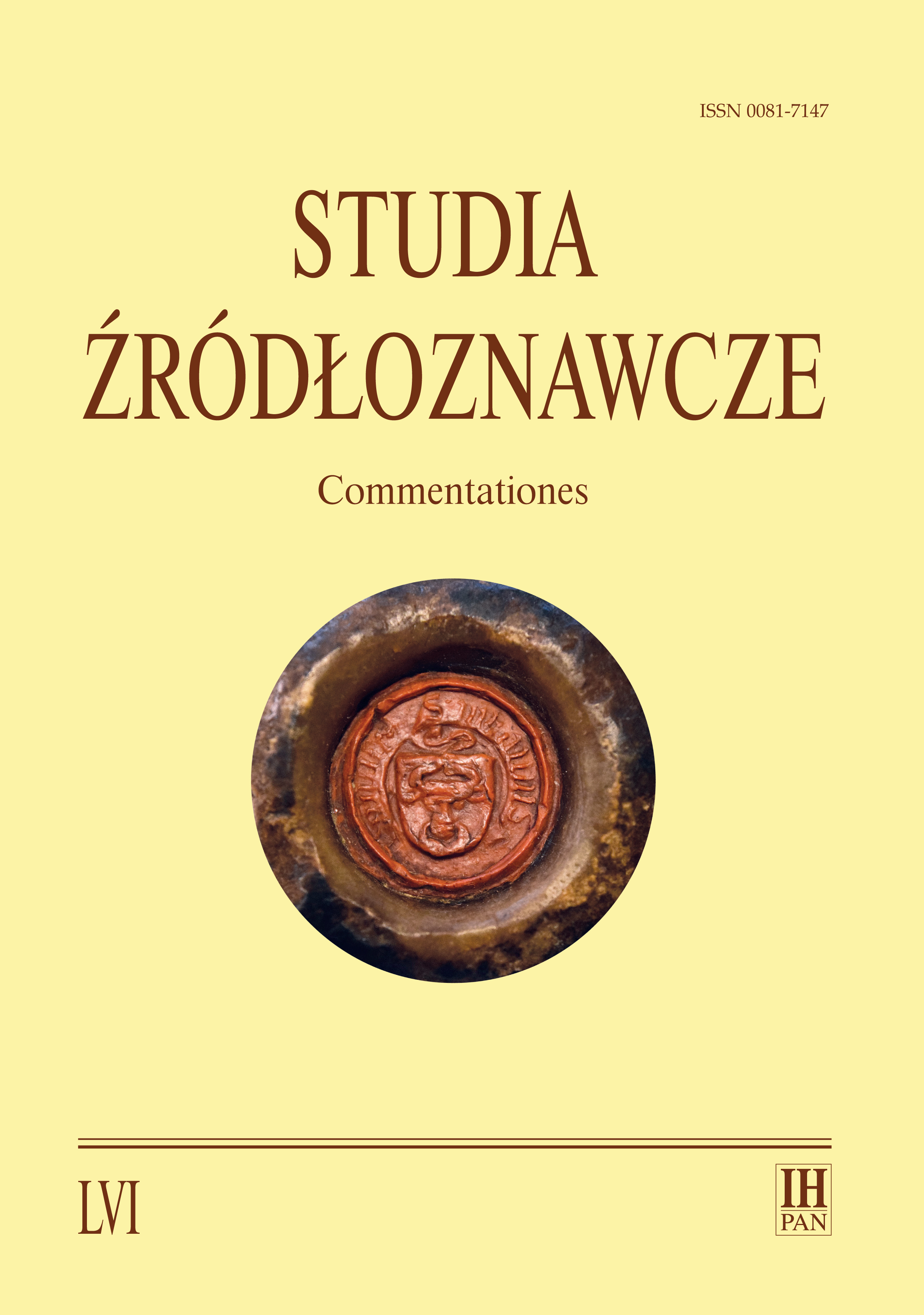Warsztat pisarski Jana Długosza w świetle Żywotu św. Stanisława
Jan Długosz’s literary skills. The case of Life of St. Stanislaus
Author(s): Hanna RajfuraSubject(s): History, Cultural history, Middle Ages, Polish Literature, 15th Century
Published by: Instytut Historii im. Tadeusza Manteuffla Polskiej Akademii Nauk
Keywords: Jan Długosz; Stanislaus of Szczepanów; Wincenty of Kielce (Kielcza); hagiography
Summary/Abstract: The purpose of the study is to describe Jan Długosz (1415–1480) as a writer and hagiographer on the basis of his Life of St. Stanislaus (1460s, BHL 7839). In the first part of the article author presents a rhetorical division of the analysed source: (1) literary topoi contained in the prologue, (2) hagiographic topoi (with comparative examples derived from lives written by Jerome, Sulpicius Severus, and the Golden Legend), (3) argumentative parts throughout the whole Life (genus inartificiale probationum; genus artificiale probationum: loci a persona, loci a re, exempla, signa; congeries, incrementum, comparatio, ratiocinatio), as well as (4) two epilogues. Then author describes theory of three styles applied in the Life and shows figurae verborum, figurae sententiarum and rhetorical devices used in it. Next, the narrative technique is described. Długosz used in the Life many metaliterary phrases, e.g. to focus his reader-audience on presented events or to underline his own opinion on the presented subject. He also played with oratio obliqua and oratio recta while describing how Bishop Stanislaus rebuked King Boleslaus. In this part it is also shown in what manner Długosz prepared speeches in oratio recta on the basis of statements contained in the Vita maior by Wincenty of Kielce/Kielcza (13th c.). Subsequently, the author presents rhetorical periods and prose rhythm (cursus) applied in the Life. The second part of the study is devoted to the investigation to what extent Długosz wrote the Life independently from the Vita maior. Author shows that Długosz in his work presented information already described by Wincenty, but in the Life he put them in other places to build tension of the quarrel between the bishop and the king. In his conclusion the author states that Długosz’s literary skills were on a high level. Despite the fact that the Life observes the rules set by a literary convention of medieval hagiography. Długosz remained individual: (1) contrary to the hagiographic tradition, he placed in the Life four documents in extenso, (2) he also unconventionally put there seven dates, (3) moreover, in his hagiographic work he mentioned political issues motivated by historical arguments. These points are also reasons for the author’s argument that Długosz wrote all his various works employing the same principles.
Journal: Studia Źródłoznawcze. Commentationes
- Issue Year: 2018
- Issue No: 56
- Page Range: 33-75
- Page Count: 43
- Language: Polish

